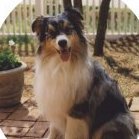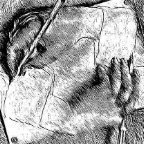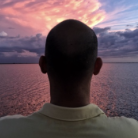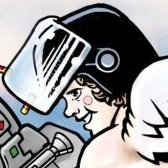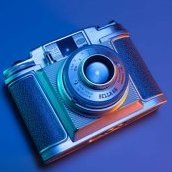-
Posts
1,151 -
Joined
-
Last visited
Reputation Activity
-
 smadell got a reaction from Undix Galore in Affinity Photo from 10,000 Feet - Free PDF
smadell got a reaction from Undix Galore in Affinity Photo from 10,000 Feet - Free PDF
I am attaching a free PDF called “Affinity Photo from Ten Thousand Feet.” This is a 41 page book that explains many of the concepts and questions that forum members ask frequently.
Much of the information is based on presentations given to my local photography club. Some of it is based on a series of articles written for the club’s newsletter. Much of the book is newly written material, based on years of working to understand digital photography, how color works, and how Affinity Photo fits into that picture.
Please enjoy the book. All I ask in return is that you look it over and leave a comment.
Affinity_Photo_from_Ten_Thousand_Feet.pdf
-
 smadell got a reaction from Boldlinedesign in Affinity Photo from 10,000 Feet - Free PDF
smadell got a reaction from Boldlinedesign in Affinity Photo from 10,000 Feet - Free PDF
I am attaching a free PDF called “Affinity Photo from Ten Thousand Feet.” This is a 41 page book that explains many of the concepts and questions that forum members ask frequently.
Much of the information is based on presentations given to my local photography club. Some of it is based on a series of articles written for the club’s newsletter. Much of the book is newly written material, based on years of working to understand digital photography, how color works, and how Affinity Photo fits into that picture.
Please enjoy the book. All I ask in return is that you look it over and leave a comment.
Affinity_Photo_from_Ten_Thousand_Feet.pdf
-
 smadell got a reaction from Jays in Affinity Photo from 10,000 Feet - Free PDF
smadell got a reaction from Jays in Affinity Photo from 10,000 Feet - Free PDF
I am attaching a free PDF called “Affinity Photo from Ten Thousand Feet.” This is a 41 page book that explains many of the concepts and questions that forum members ask frequently.
Much of the information is based on presentations given to my local photography club. Some of it is based on a series of articles written for the club’s newsletter. Much of the book is newly written material, based on years of working to understand digital photography, how color works, and how Affinity Photo fits into that picture.
Please enjoy the book. All I ask in return is that you look it over and leave a comment.
Affinity_Photo_from_Ten_Thousand_Feet.pdf
-
 smadell got a reaction from jmwellborn in Affinity Photo from 10,000 Feet - Free PDF
smadell got a reaction from jmwellborn in Affinity Photo from 10,000 Feet - Free PDF
@Alfred - of course, you're right about that. I will chalk this up to semantics, and hope that it does not cause confusion for anyone.
And, thank you @jmwellborn - Channels was one of the stickiest problems for me as I was learning all of this. I actually wrote a series of 5 articles for my local photo club about image channels (not only for instruction, but to provide myself an opportunity to learn more). Most of the text and the images were taken from those articles. Masks were another difficult thing for me to learn, although masks and channels are really birds of the same feather!
-
 smadell got a reaction from Alfred in Affinity Photo from 10,000 Feet - Free PDF
smadell got a reaction from Alfred in Affinity Photo from 10,000 Feet - Free PDF
@Alfred - of course, you're right about that. I will chalk this up to semantics, and hope that it does not cause confusion for anyone.
And, thank you @jmwellborn - Channels was one of the stickiest problems for me as I was learning all of this. I actually wrote a series of 5 articles for my local photo club about image channels (not only for instruction, but to provide myself an opportunity to learn more). Most of the text and the images were taken from those articles. Masks were another difficult thing for me to learn, although masks and channels are really birds of the same feather!
-
 smadell got a reaction from Tom Lachecki in Affinity Photo from 10,000 Feet - Free PDF
smadell got a reaction from Tom Lachecki in Affinity Photo from 10,000 Feet - Free PDF
I am attaching a free PDF called “Affinity Photo from Ten Thousand Feet.” This is a 41 page book that explains many of the concepts and questions that forum members ask frequently.
Much of the information is based on presentations given to my local photography club. Some of it is based on a series of articles written for the club’s newsletter. Much of the book is newly written material, based on years of working to understand digital photography, how color works, and how Affinity Photo fits into that picture.
Please enjoy the book. All I ask in return is that you look it over and leave a comment.
Affinity_Photo_from_Ten_Thousand_Feet.pdf
-
 smadell got a reaction from Archangel in Affinity Photo from 10,000 Feet - Free PDF
smadell got a reaction from Archangel in Affinity Photo from 10,000 Feet - Free PDF
I am attaching a free PDF called “Affinity Photo from Ten Thousand Feet.” This is a 41 page book that explains many of the concepts and questions that forum members ask frequently.
Much of the information is based on presentations given to my local photography club. Some of it is based on a series of articles written for the club’s newsletter. Much of the book is newly written material, based on years of working to understand digital photography, how color works, and how Affinity Photo fits into that picture.
Please enjoy the book. All I ask in return is that you look it over and leave a comment.
Affinity_Photo_from_Ten_Thousand_Feet.pdf
-
 smadell got a reaction from Rizalrif007 in Affinity Photo from 10,000 Feet - Free PDF
smadell got a reaction from Rizalrif007 in Affinity Photo from 10,000 Feet - Free PDF
I am attaching a free PDF called “Affinity Photo from Ten Thousand Feet.” This is a 41 page book that explains many of the concepts and questions that forum members ask frequently.
Much of the information is based on presentations given to my local photography club. Some of it is based on a series of articles written for the club’s newsletter. Much of the book is newly written material, based on years of working to understand digital photography, how color works, and how Affinity Photo fits into that picture.
Please enjoy the book. All I ask in return is that you look it over and leave a comment.
Affinity_Photo_from_Ten_Thousand_Feet.pdf
-
 smadell got a reaction from NilsFinken in Affinity Photo from 10,000 Feet - Free PDF
smadell got a reaction from NilsFinken in Affinity Photo from 10,000 Feet - Free PDF
I am attaching a free PDF called “Affinity Photo from Ten Thousand Feet.” This is a 41 page book that explains many of the concepts and questions that forum members ask frequently.
Much of the information is based on presentations given to my local photography club. Some of it is based on a series of articles written for the club’s newsletter. Much of the book is newly written material, based on years of working to understand digital photography, how color works, and how Affinity Photo fits into that picture.
Please enjoy the book. All I ask in return is that you look it over and leave a comment.
Affinity_Photo_from_Ten_Thousand_Feet.pdf
-
 smadell got a reaction from manfred9 in Pastel Watercolor Effect
smadell got a reaction from manfred9 in Pastel Watercolor Effect
I recently watched one of @dmstraker Dave Straker’s InAffinity tutorials about “Pastel Colour Grading…” and it gave me some ideas. So, thanks to you for the inspiration, Dave!
I’ve attached another macro for creating a specific Artistic Look – this one called a Pastel Watercolor Effect. The attached file is a macro category (even though it only contains a single macro); you can import it into the Library Panel in the Desktop version of Affinity Photo, and it is compatible with the iPad version as well. (In my own preliminary testing, the macro works fairly well on an iPad, although there are some issues with missing items in the dialog box that appears for setting parameters.)
When you click the macro, it creates a number of layers inside of a group. The group is called “Pastel Watercolor Effect” and it can be turned on and off by simply showing or hiding the entire group. When you invoke the macro, you will be presented with a number of options in a dialog:
1-6] Lighten Color - Cyan, Magenta, Yellow, Red, Green, Blue
All of these color ranges are initially set to a value of -200%. As you move each of the sliders to the right, that particular color range will be selectively lightened. If you set any of the sliders all the way to 100% then that color range will go to white.
7] Set Amount of Pastel Blurring
This slider defaults to a value of 25 px. Setting it higher or lower will adjust the amount of “smudging” that the pastel layer displays.
8] Set Intensity of Outlines
This slider defaults to a value of 0.7. You can set it to values between 0 and 2, with higher values giving you darker and more intense outlines. If you set the Intensity slider to 0, the black outlines will effectively disappear.
9] Adjust Brightness
Brightness defaults to a value of 20%. You might want to increase it if (i) you have increased the outline intensity significantly, or (ii) to compensate for changes (particularly decreases) you might make to the Contrast.
10] Adjust Contrast
Contrast defaults to 0%. Adjust this to taste.
I’ve attached 2 photos (below) to show Before and After versions using this effect. Included in the photos are the settings that were used (which are a bit different from the default values).
* * * * * * * * * * * * * * * * * * * * * * * * * * * *
As with all of the macros I have submitted, please note that I am only one person and have tested this on a limited number of images on a single computer. There is no way to have foreseen every possible scenario. I am hopeful (but obviously won’t guarantee) that you’ll like the results.
If you do like the macro, please keep it and enjoy it. This is “pay it forward software,” the happy result of an abundance of learning gleaned from the members of this forum who are so generous with their time and expertise!
Pastel Watercolor Effect.afmacros
-
 smadell reacted to Dazmondo77 in Master pages rendering issue
smadell reacted to Dazmondo77 in Master pages rendering issue
This is already logged so should be fixed in a new beta - for me its anything over 468% - but I gather it's different on differing machines.
-
 smadell reacted to Herojas93 in Master pages rendering issue
smadell reacted to Herojas93 in Master pages rendering issue
Hi,
I have notice with last two betas of Affinity Publisher 1.9.1 one problem rendering master pages.
That issue with MAS version 1.9.0 and same file doesn't happens.
When you zoom in and out the pages shows or hide any master page applied.
See attached video.
Thanks
Rendering.mov -
 smadell got a reaction from Puck in Affinity Photo Customer Beta (1.9.1.219)
smadell got a reaction from Puck in Affinity Photo Customer Beta (1.9.1.219)
I've noticed that the Brushes now sort themselves alphabetically. This seems to be live, as well, since renaming a brush category causes the list to re-alphabetize. Although I think it's only a partial solution to a true brush "organizer," it's a nice addition. I may spend some time renaming my brushes to things like: 01-Brush Name, 02-Other Brush Name, and so forth. That way, I can group them and organize them in a more appropriate manner.
-
 smadell got a reaction from R C-R in Affinity Photo Customer Beta (1.9.1.219)
smadell got a reaction from R C-R in Affinity Photo Customer Beta (1.9.1.219)
I've noticed that the Brushes now sort themselves alphabetically. This seems to be live, as well, since renaming a brush category causes the list to re-alphabetize. Although I think it's only a partial solution to a true brush "organizer," it's a nice addition. I may spend some time renaming my brushes to things like: 01-Brush Name, 02-Other Brush Name, and so forth. That way, I can group them and organize them in a more appropriate manner.
-
 smadell got a reaction from jmwellborn in Affinity Photo Quick Start Guide (made for photographers)
smadell got a reaction from jmwellborn in Affinity Photo Quick Start Guide (made for photographers)
It’s free in the same way that Facebook is free. As long as you understand that “you are the product,” it is most definitely optional, too.
-
 smadell got a reaction from Joachim_L in Save Selections within AP
smadell got a reaction from Joachim_L in Save Selections within AP
Assuming you want to save a “marching ants” type selection, use the Channels panel and (with the selection active) right click on Pixel Selection and choose Save to a Spare Channel.
-
 smadell got a reaction from jmwellborn in Affinity Photo Customer Beta (1.9.0.216 - GM Seed)
smadell got a reaction from jmwellborn in Affinity Photo Customer Beta (1.9.0.216 - GM Seed)
Come Back Tomorrow!.mp4 -
 smadell got a reaction from ronnyb in Create & Edit Masks with Red Overlays
smadell got a reaction from ronnyb in Create & Edit Masks with Red Overlays
I am attaching a set of macros that allow the creation and editing of layer masks using a red overlay to assist in the process.
* * * * * * * * * * * * * * * * * * * * *
Creating masks in Affinity Photo is fairly easy. Either create a new Mask layer and paint on it, or use the Selection tools to select the appropriate area and then create the mask to incorporate the selection.
The absence of a red overlay when creating an initial mask can be overcome by using the Quick Mask tool, which allows the user to create a selection with the visual aid of a red overlay. Once the Quick Mask view has done its thing, (i) turn the Quick Mask off; and (ii) create the new mask layer.
Editing an existing mask is less straightforward. In order to edit a mask, you can paint in black, white, or grey while the mask layer is selected. Or, you can look at the mask in "isolation mode" to do your painting. In the first case, you don't get any type of red overlay to indicate what's masked and what's not; in the second case, you can't see the image being masked in order to tell where your mask needs editing.
Up until now, there has not been a good workaround. This set me thinking...
* * * * * * * * * * * * * * * * * * * * *
I am attaching a set of macros called Create/Edit Masks with Red Overlay. This is a set of 4 macros inside a macro category (and, therefore, import it through the Library panel).
The first two are for creating masks utilizing a red overlay. They are an alternative to using Quick Mask to create a selection and then use that selection to create a mask.
More importantly, however, the last two macros are for editing an existing mask with the benefit of a red overlay, being able to visualize the image being masked underneath.
[Note: these macros will not create, and will not adequately edit, vector based masks. They are exclusively for use on pixel based masks.]
Here are step by step directions for using the macros. I will use a photo of the USS Midway in my examples.
1) Create Mask with Red Overlay - Set Up
Click on the first macro. This will create an empty mask layer (one which starts entirely black) embedded in a group. The various other layers in the group provide the red overlay - leave them alone. Paint with white or black (just as you would with the Quick Mask) in order to reveal or conceal areas of the underlying photo. The image below shows a mask with the body of the ship painted in white, and the rest of the mask black.
2) Create Mask with Red Overlay - Finalize
Once you have created the mask as you might like it, click the second macro. This will place the newly created mask at the top of the layer stack, and it will be named "Mask - Drag to Desired Position." Obviously, you should position the new mask as you would like. The image below shows the result of the second macro, before the mask is repositioned.
3) Edit Mask with Red Overlay - Set Up
Here's where the fun starts. You need to have a mask that you want to edit, and it needs to be selected. The mask should be a child of the pixel or image layer, and should not be further nested. (In other words, it should be a child of the image, but not a grandchild.) Click on the third macro. Your selected macro will be hidden and a copy of it will be placed into a group that sits above the appropriate image. The macro copy is named "TemporaryMaskForEditing." Edit that mask using black or white paint, just as you would any other mask. The difference here is that all this is constructed to allow you to see the photo while you are editing the mask. Just as in the Quick Mask setup, the white portions of the mask will reveal the photo below normally but the black portions of the mask will also show the photo, but covered with a red overlay.
The image below is the immediate result of clicking the third macro.
And, the next image shows an edited mask after using black and white paint on the mask layer.
4) Edit Mask with Red Overlay - Finalize
Click on the fourth macro with the edited mask selected. The edited mask will be placed as a child in the photo, the old mask will still be there but remains invisible, and all the other stuff is deleted. The image below shows the result of the 4th macro.
* * * * * * * * * * * * * * * * * * * * *
No guarantees are made, and there are certainly some scenarios where this might not work. But, if it fulfills a need for you, it's yours.
Create:Edit Masks with Red Overlay.afmacros
-
 smadell got a reaction from Mann Artt in Cropping
smadell got a reaction from Mann Artt in Cropping
One more thing... Duplicating the Background layer is a very Photoshop-ish way of doing things. Most (but not all) things you do in AP will be non-destructive. That includes Adjustment layers, Live Filter layers, cloning and inpainting (as long as they are done on separate Pixel layers), and many other operations. I find that I only “duplicate” to a new layer when I’m doing something that has to be destructive, and then I will use Merge Visible from the Layer menu. Destructive things include non-Live filters, Frequency Separation, and a few other operations. For the most part, the Photoshop behavior of immediately duplicating the Background layer is (in my view) unnecessary.
-
 smadell got a reaction from James Fourth in Using Downloaded Presets
smadell got a reaction from James Fourth in Using Downloaded Presets
If you look carefully at the PhotoWhoa site, you should notice that all of the presets are described as an "Affinity Presets LUTS Collection." This pretty much defines how you'll end up using them.
Affinity Photo can use "color lookup tables" (otherwise known as CLUT's or LUT's) and these are fairly commonly used to "color grade" images or video. Basically, if you start with an image and then alter it with one or more Adjustment layers, you can then choose "Export LUT..." to form an external file that encapsulates all of the adjustments you made. Basically, a color lookup table is simply that - it lets you start with a bunch of pixels (your photograph) in which each pixel has a defined color, then the LUT changes each of the colors to a pre-defined "other" color according to the entries in the lookup table. It's a simple substitution scheme, which goes something like "wherever there's a pixel with this color [R255,G0,B0] put in a something else, like [R240,G100,B100]." And, it does that for each triplet combination of Red, Green, and Blue in your photo.
The up side to using a LUT is that it is simple, and boils down to an all-in-one color grade change. The down side is that the LUT does not add the component Adjustment Layers, so you can't really tweak the components afterward (except by adding more adjustments and filters, etc.)
To use your MegaPresets files, simply put the collection of folders somewhere convenient. I'm not from the Windows side, but I don't think there's a specific place they need to be. Once you have a photo in Affinity Photo, add an adjustment layer by choosing "LUT..." from the Layer>New Adjustment Layer submenu, or by choosing it from the icon at the bottom of the Layers panel. The LUT dialog box will open.
Click on the button called "Load LUT" and you will be able to navigate to the folder(s) containing your presents. Choose the one you like. Your photo will have one extra adjustment layer, labelled LUT, and the color lookup changes dictated by the LUT file will have been applied. (You may want to change Blend Modes, opacity, and so forth on the LUT adjustment layer to further refine the color grading.
-
 smadell got a reaction from csp in Affinity Photo Customer Beta (1.9.0.216 - GM Seed)
smadell got a reaction from csp in Affinity Photo Customer Beta (1.9.0.216 - GM Seed)
Come Back Tomorrow!.mp4 -
 smadell got a reaction from telemax in Affinity Photo Customer Beta (1.9.0.216 - GM Seed)
smadell got a reaction from telemax in Affinity Photo Customer Beta (1.9.0.216 - GM Seed)
Come Back Tomorrow!.mp4 -
 smadell got a reaction from Alfred in How to Blend Two Photos Together?
smadell got a reaction from Alfred in How to Blend Two Photos Together?
There's actually a more elegant solution, but one that is a bit convoluted. Once again, put your skyline photos one atop the other. Now, instead of creating a mask you'll draw a rectangle (use the Rectangle shape from the Tools panel) on top of the stack. Put a gradient into the middle of that rectangle, with a solid color (I used black) on both the top and bottom nodes. So far, you've got a gradient that goes from black to black, I know. But now, set the Opacity of the top node to 0%. So now you've got a gradient that is solid on the bottom and transparent on the top.
You'll take that rectangle and make it a Child Layer of the Top Skyline. You can drag the rectangle layer just beneath and to the right of the Top Skyline layer, until you see the horizontal blue line beneath the Top Skyline layer. Or, with the Rectangle at the top of the Layer stack, you can choose Move Inside from the Arrange menu.
Once the rectangle is a child of the Top Skyline, set its Blend Mode to Erase. Because it's a child of the Top Skyline, the blend mode will ONLY act on that layer. And the Erase will only erase the part of the Top Skyline layer that contains visible pixels (that is, the bottom portion of the Top Skyline layer).
The nice part about doing it this way is that the Gradient remains editable, and can be repositioned at will at any time.
-
 smadell got a reaction from Alfred in How to Blend Two Photos Together?
smadell got a reaction from Alfred in How to Blend Two Photos Together?
Put one photo on top of the other in the Layers Panel. Attach a mask to the top layer. With the mask selected, add a White to Black gradient. (see below for results, as well as the Layers panel)
-
 smadell reacted to Geetardude in Manual Frequency Seperation Photoshop style
smadell reacted to Geetardude in Manual Frequency Seperation Photoshop style
Big thanks to @smadell for the script, and @Dan C and @Gnobelix for additional help. Great help in these forums. I decided to buy Affinity Photo as a result. And then we will see over time if I decide to ditch Photoshop and and only Keep Lightroom :D
Will continue and play around with it and hopefully the 16bit will be supported in production version soon



